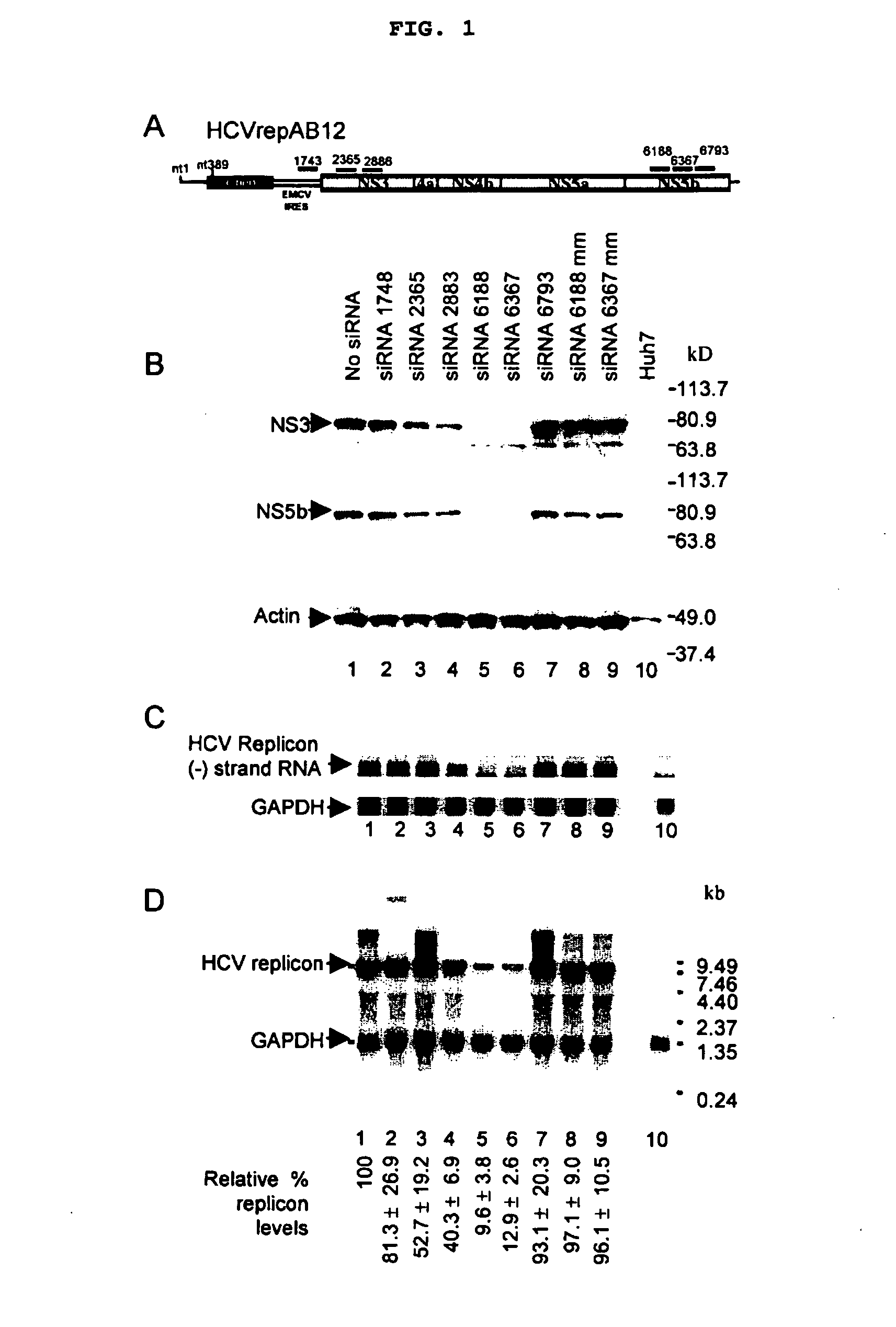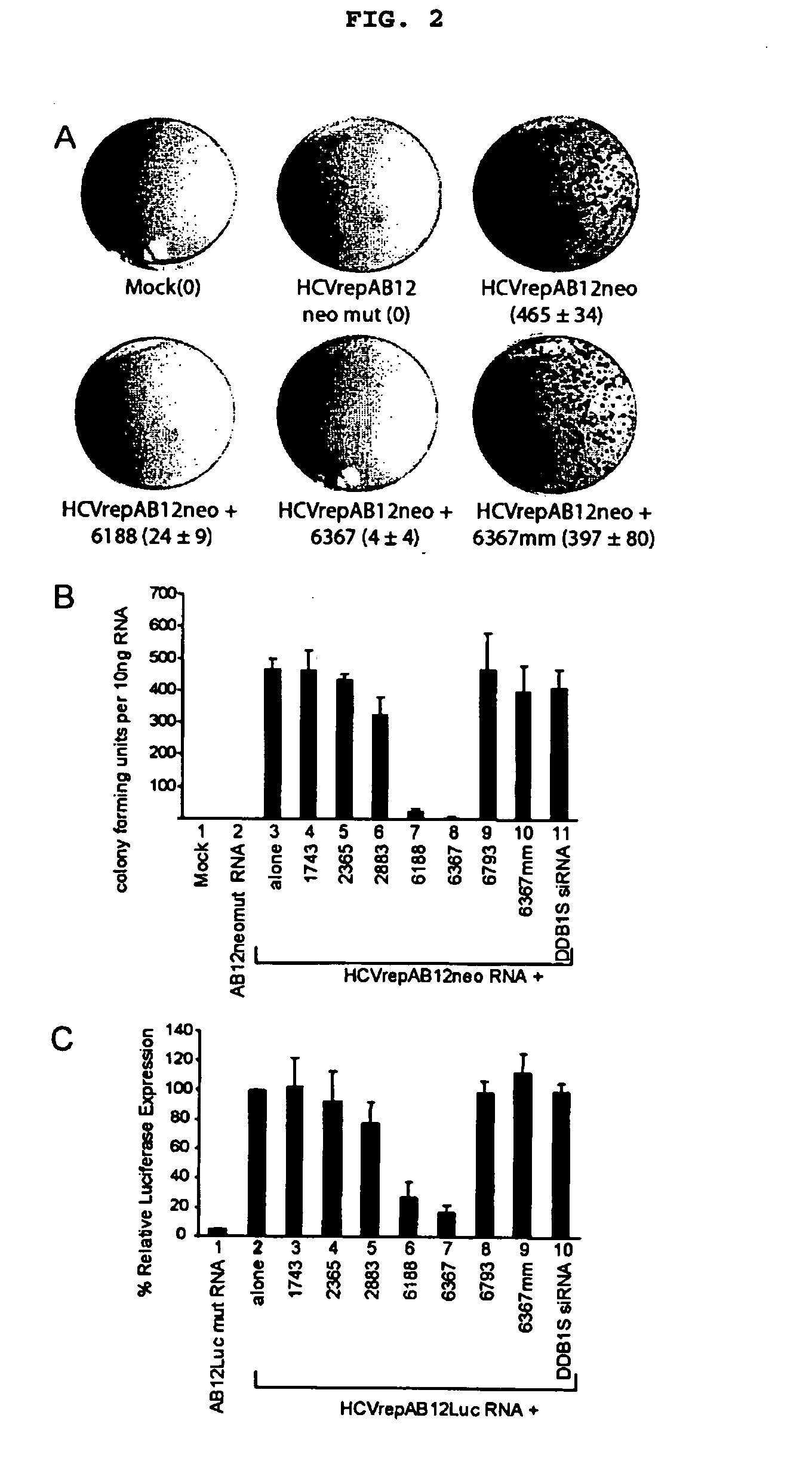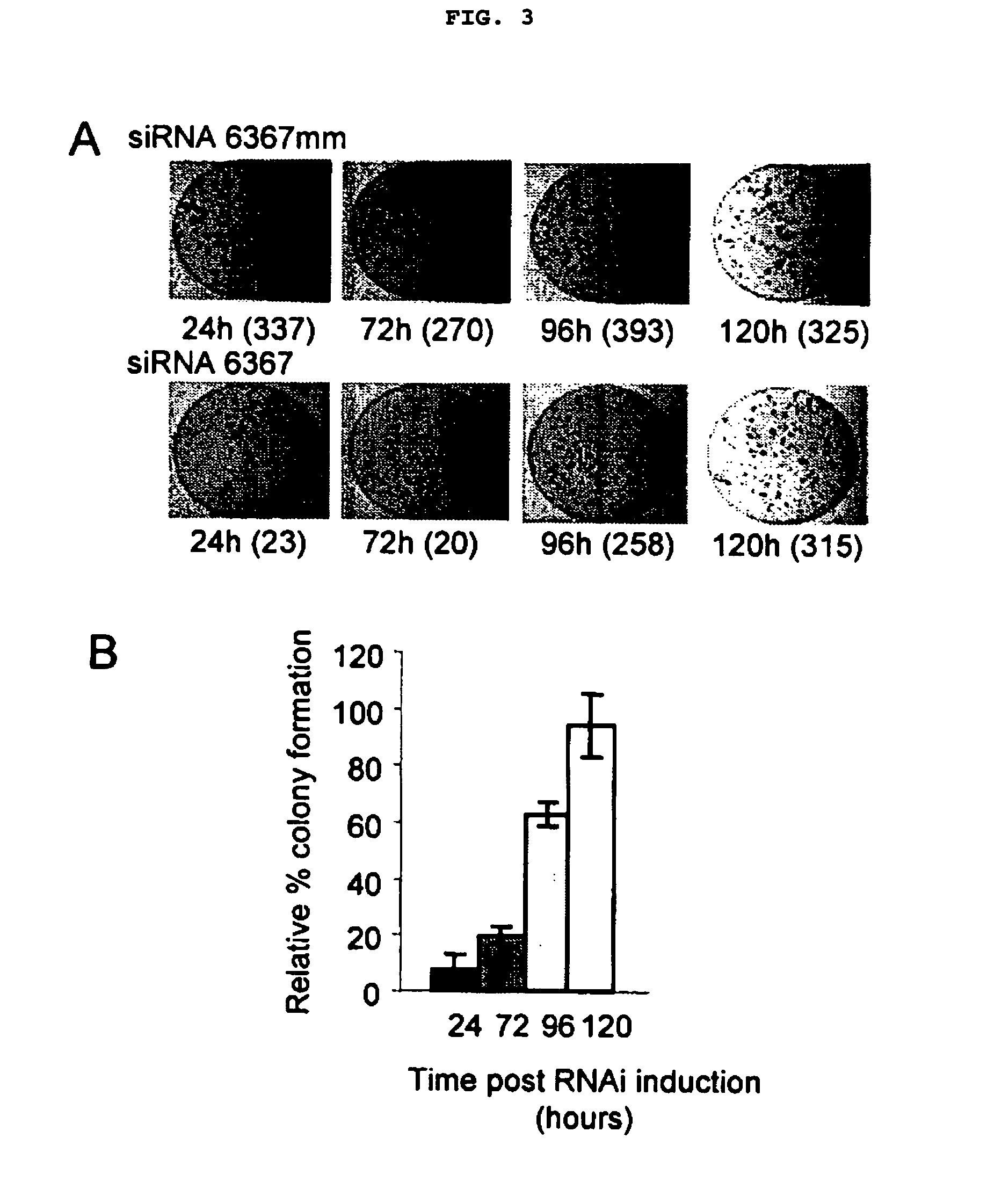Short interfering RNA as an antiviral agent for hepatitis C
a technology of rna interference and hepatitis c virus, applied in the field of short interfering rna as an antiviral agent for hepatitis c, and the treatment of hcv, can solve the problem of ineffective rna interference in clearing the virus
- Summary
- Abstract
- Description
- Claims
- Application Information
AI Technical Summary
Benefits of technology
Problems solved by technology
Method used
Image
Examples
example 1
[0027] Preparation of Cell Culture
[0028] The cell line Huh-7 (27) was kindly provided by Dr. Stanley M. Lemon (The University of Texas Medical Branch at Galveston, Galveston, Tex.) and were routinely grown in Dulbecco's minimal essential media supplemented with nonessential amino acids, 100 U / mL of penicillin, 100 μg / mL of streptomycin, and 10% fetal calf serum (FCS, Wisent Inc, Montreal, Canada). Cell lines carrying HCV replicons were grown in medium containing 800 μg / ml of G418 active ingredient (Geneticin: Gibco / Invitrogen, Carlsbad, Calif.).
[0029] Construction of HCV Replicons and pCEP4-H1 / H1 Expression Vector and Synthesis of siRNAs
[0030] Plasmids pHCVrep1b BB7 (25) and p90 / HCV FL-long pU (28) were provided by Dr. Charles M Rice (Center for the Study of Hepatitis C, The Rockefeller University, New York, N.Y.). The plasmid pHCVrepAB12 was made by adding two additional adaptive mutations, E1202G and T1280I (26), to the NS3 coding region, and an additional 12 nucleotides of the...
example 2
[0043] Construction of HCV Replicon used in the Study
[0044] The design of the bicistronic HCV replicon used in this study is shown in FIG. 1A. The HCVrepBB7 replicon construct was obtained from Dr. Charles Rice and contained the adaptive mutation S2204I (25). We constructed an enhanced replicon construct by introducing two additional adaptive mutations, E1202G and T1280I (26) and extending the HCV IRES by 12 nucleotides (29). The enhanced replicon construct, HCVrepAB12 had a colony forming efficiency of 1×105 colonies per μg of RNA, which is a 1700-fold improvement over the efficiency of HCVrepBB7 in our hands. A G418 resistant cell clone, AB12-A2, was isolated, amplified and screened for the presence of the replicon RNA and absence of replicon DNA by PCR.
example 3
[0045] RNA Interference Silences HCV Subgenomic Replication and Gene Expression
[0046] Six siRNAs were designed to trigger RNA interference through homology to specific regions of the HCV subgenomic replicon (FIG. 1A, FIG. 5). These six siRNA triggers are:
17435′- CGU CUA GGC CCC CCG AAC CAC - dTdT - 3′(SEQ ID NO 18)3′- dTdT - GCA GAU CCG GGG GGC UUG GUG - 5′(SEQ ID NO 19)23655′- CUC GUC CCC UCC GGC CGU ACC - dTdT - 3′(SEQ ID NO 20)3′- dTdT - GAG CAG GGG AGG CCG GCA UGG - 5′(SEQ ID NO 21)28835′- GGG GGG GAG GCA CCU CAU UUU - dTdT - 3′(SEQ ID NO 22)3′- dTdT - CCC CCC CUC CGU GGA GUA AAA - 5′(SEQ ID NO 23)61885′- GGA GAU GAA GGC GAA GGC GUC - dTdT - 3′(SEQ ID NO 24)3′- dTdT- CCU CUA CUU CCG CUU CCG CAG - 5′(SEQ ID NO 25)63675′- GAC ACU GAG ACA CCA AUU GAC - dTdT - 3′(SEQ ID NO 26)3′- dTdT- CUG UGA CUC UGU GGU UAA CUG - 5′(SEQ ID NO 27)67935′- GGG CAG AAC UGC GGC UAU CGC - dTdT - 3′(SEQ ID NO 28)3′- dTdT- CCC GUC UUG ACG CCG AUA GCG - 5′(SEQ ID NO 29)
[0047] As used herein, each siRNA ...
PUM
 Login to View More
Login to View More Abstract
Description
Claims
Application Information
 Login to View More
Login to View More - R&D
- Intellectual Property
- Life Sciences
- Materials
- Tech Scout
- Unparalleled Data Quality
- Higher Quality Content
- 60% Fewer Hallucinations
Browse by: Latest US Patents, China's latest patents, Technical Efficacy Thesaurus, Application Domain, Technology Topic, Popular Technical Reports.
© 2025 PatSnap. All rights reserved.Legal|Privacy policy|Modern Slavery Act Transparency Statement|Sitemap|About US| Contact US: help@patsnap.com



